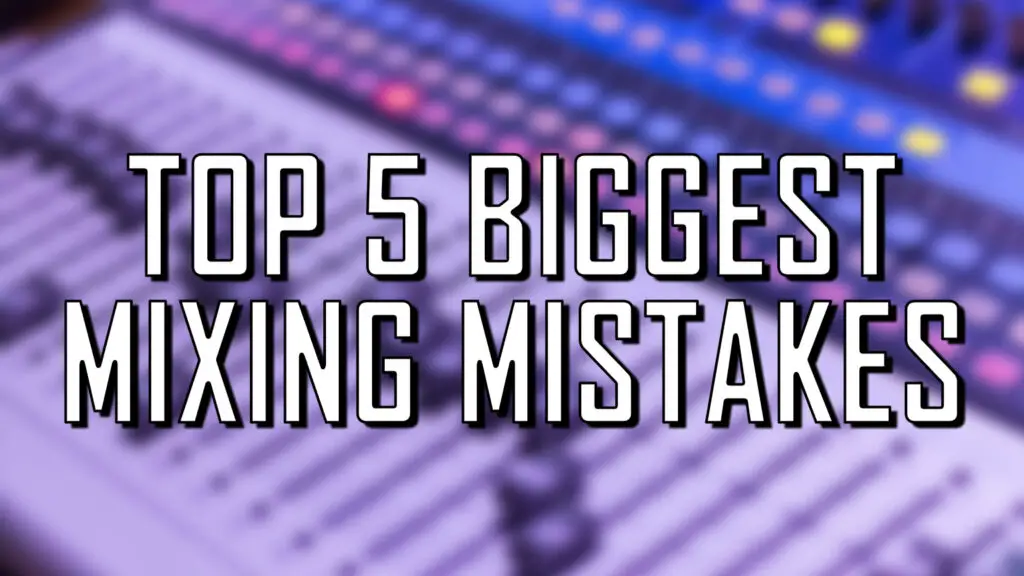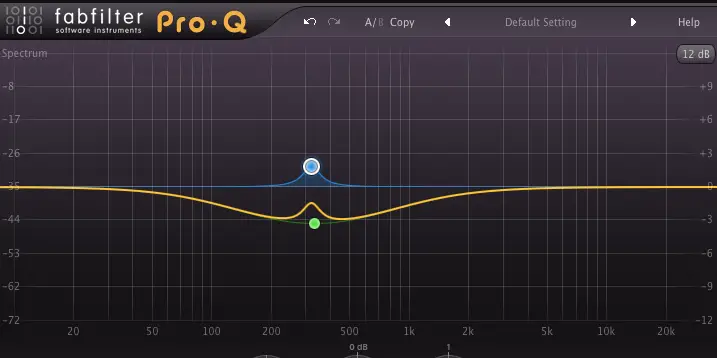5 Biggest Mixing Mistakes and How to Fix Them (2022 Music Mixing Tips)

Mixing is a detailed process that requires practice, and a lot of patience.
If you’re a complete beginner to mixing, it can feel very overwhelming at first. You may have already spent hours trying to perfect a mix, with little to no success.
From my years working with music production beginners, I tend to notice the same mistakes over and over. I still have my tracks from when I first started learning to mix, and they all sound “flat”, muffled and unbalanced. Looking back, I was falling into the same pitfalls that many newbie producers do when they are learning to mix.
So, to help you improve your final mixes, here are the 5 biggest mixing mistakes you might be making, and how to fix them. Enjoy!
1. Avoid the solo button
The first tip I would give anyone looking to improve their mixing ability is to cut down your time spent listening to individual tracks in solo.
Sometimes, it’s important to solo a specific track to fix potential issues within the sound. For example, you may want to solo a vocal track to identify certain frequency bands that need to be reduced. This is completely fine and is considered good mixing practice.
However, regularly using the solo button to EQ each sound or add compression etc, can really hinder your creative process. The listener will never hear each solo’d track. What matters is the overall track mix, and how the track elements interact with one another. Don’t spend hours EQ’ing each individual solo’ed track, as this won’t provide you with the context of the entire mix.
Make sure you are curating the song as a whole. When mixing a track, perspective and context are key.
2. Switch things up
If you’ve had a lot of experience mixing in the past, you’ll know how it feels to deal with “ear fatigue”. This is when you’ve been listening to the same song for hours, and you begin to lose the focus and subjectivity you need to produce a great mix.
You should be taking regular breaks throughout your mixing process. I never go over 30 minutes of mixing without a break. When it comes to recording, composing laying down tracks and other music-making processes, you may not need to take breaks anywhere near as much. However when it comes to mixing, it is absolutely essential.
On a similar note, try switching things up during the mixing process. Take your mix and listen to it in a new environment.
Listening to your mix through different speakers can really help identify issues that maybe weren’t too apparent before. This is particularly true with low-end frequencies. There’s nothing worse than thinking your have the perfect mix in a studio environment, then you listen to the song in your car and the bass blows the speakers out.
Make sure you’re switching things up, and remember to give your ears a break, they’ll thank you for it.

3. Subtractive EQ
Equalisation is one of the most important parts of the mixing process, and can make or break a final mix.
One of the best EQ techniques you can use is called subtractive equalisation. Essentially, this is when you cut / reduce frequencies instead of boosting to let specific sounds stand out in the mix.
So, why is subtractive EQ better than just boosting the EQ values you want to make more prominent? Boosting EQ is more likely to interfere with other audio processes you have going on, which could lead to slight distortion or clipping. This is particularly true with digital EQ simulations, but even with analog EQ it’s usually better practice to use subtractive EQ.
For example, if you have two sounds that are overlapping within a certain frequency range, you wouldn’t boost the non-affected frequencies of each sound, you’d smoothly reduce the overlapping frequencies, so the rest of the sound has more room to breathe.
Like with most mixing technique, this isn’t a hard-fast rule. There are many occasions where a frequency range may need a little boost (such as adding high-end “brightness” to a hi-hat). However, try to get in the habit of approaching EQ with a “subtractive mindset”.
4. Volume automation
Volume automation is one of the most fundamental, yet often neglected parts of mixing.
Many audio recordings, such as vocals or guitar, contain pesky volume spikes and considerable variation in volume throughout (regardless of how good the performance is!).
Compression is a fantastic way of reducing and “smoothing out” these volume imbalances to give a more polished sound. However, compressors can often over-compensate, especially when it comes to unbalanced audio recordings. Vocals for example are often louder in certain sections and quieter in others, which can be pretty problematic when adding compression.
For example, if you have a track with a synth melody that plays through the entire track, it may need a completely different volume level in the verses than in the chorus/hook sections of a song.
So, automate your track volumes before anything else. Before moving onto compression, EQ etc, make sure your track is well balanced first. The volume balance of an individual instrument or vocal track will impact how much additional mixing is needed.
5. Don’t try to master while mixing
When it comes to finalising your tracks, mixing and mastering should be two entirely separate processes.
Some producers use plugins such as FL Studio’s Maximus to master their tracks, then edit other individual EQ and compression settings to work out the kinks. With this simultaneous approach to mixing and mastering, you are limiting the creative freedom of mixing your raw track.
When you begin to master a track, it’s important you have a finalised concept of how each individual track interacts with the rest.
In a perfect world, I’d say mix and master on entirely separate days. If that’s not possible, at least mix the track fully first, THEN move on to the mastering.

5 Biggest Mixing Mistakes: Similar Articles
Top 10 Mixing Tips that will TRANSFORM your Final Track
How to Mix Bass To Achieve the PERFECT Low-End
